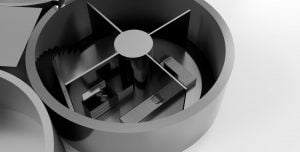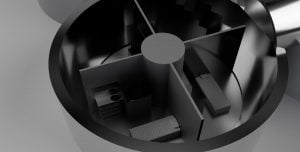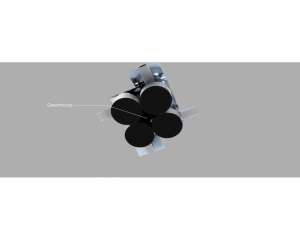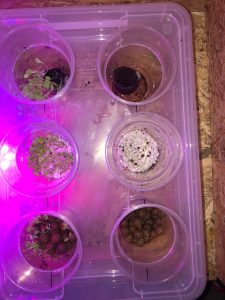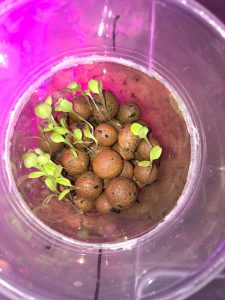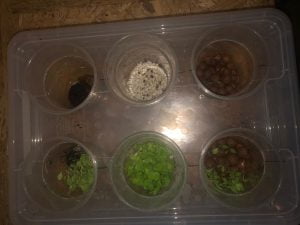Moon Camp Pioneers Gallery 2020-2021
In Moon Camp Pioneers each team’s mission is to 3D design a complete Moon Camp using Fusion 360. They also have to explain how they will use local resources, protect astronauts from the dangerous of space and describe the living and working facilities.
Team: Hestia
“Tudor Vianu” National High School of Computer Science Bucharest Romania 17, 18
External viewer for 3d project
|
Project description
Humans are, and have always been, explorers. Our aim is to build a research camp on the moon to expand our knowledge on its characteristics and opportunities for further development. In the first phase, our shelter will accommodate 3 astronauts. We will build 4 modules, constructed both underground and on the surface, each designed with an airlock entrance and connected to each other through tunnels. The control centre will coordinate all the life support systems. The living module, will have the bedrooms, gym and lounge areas. In the research area they will conduct experiments. The soil and water processing station will extract substances from the regolith and purify the water ice. In the separate module we will produce nuclear energy. In the centre, there will be a greenhouse, for growing our crops. The whole base will be covered with a solar panel roof, that will also double as a shield. |
|||
|
Where do you want to build your Moon Camp?
We plan to build our moon camp close to the Lunar Poles. After analyzing all the possible locations for our base: lava tunnels, poles, equatorial regions, craters, we concluded that the polar regions were the most favorable option. There is evidence that we can find plenty of water ice trapped near the moon’s surface in the shadowed areas near the poles. This would not only be a viable water source, but also a very important research opportunity. Moreover, the poles have almost permanent sunlight which can be converted into energy using our solar panels, and used to grow our crops. Furthermore, while the moon’s surface temperature varies from 123℃ to -233℃, at the poles it only oscillates between 0℃ to -50℃. This smaller amplitude leads to a more feasible way of keeping the place habitable. How do you plan to build your Moon Camp? Describe the techniques and materials you would use.
The moon camp will have four modules connected through tunnels and a greenhouse placed in the center. The establishment will be both underground and on the surface, so we’ll start by digging out the soil using an excavator. There, we can construct the underground walls, by 3d printing the lunar soil already extracted. Since bringing materials from earth is costly and ineffective, we can only transport small amounts of lightweight materials. We will use aluminum alloys to increase the strength of the structure. The greenhouse’s roof will be made out of toughened glass, in order to use the sunlight for agriculture but also provide shielding. The whole construction will have a ‘roof’ of solar panels. But since we need protection from moon’s harsh conditions, we’ll vacuum several layers of polyethylene and carbon kevlar, resulting in a 50 cm thick shield. The environment on the Moon is very dangerous for the astronauts. Explain how your Moon Camp will protect them.
Due to the lack of atmosphere on the moon, our camp is exposed to several threats. The three most important issues that we face and have to take into account are: varying temperatures, dangerous solar radiation and meteorite showers. By locating our base at the lunar poles we minimize the difference between the extreme temperatures, and since most of the camp is located underground the temperature will be kept constant. The underground part of the establishment is also safe from radiation and meteorite showers, therefore all the essential systems will be beneath the moon’s surface and in case of emergency, the astronauts can lead a normal activity by staying underground. The roof of solar panels will also have a shield made out of several layers of polyethylene and carbon Kevlar. These layers will be vacuumed together, a 50cm thick such shield providing protection against solar radiation and meteorites. Explain how your Moon Camp will provide the astronauts with:
|
|||
|
Water
|
Food
|
Electricity
|
Air
|
|
Providing water is one of the most important aspects of our moon camp, given its indispensability for humans’ life. Of course, in the early phase we will bring water from earth. We will use recycling systems similar to the ones on the ISS to ensure that we lose as little water as we can. Given our proximity to the poles, we will excavate the moon’s ice deposits using heated drills. The collected ice will be melted, filtered and chemically treated in order to transform it into drinkable and usable water for different activities (washing, agriculture, showering). |
Plants are able to successfully grow in space only in a controlled environment, using certain techniques. The most efficient technique is hydroponics. Compared to conventional farming, production is 4x times higher. We conducted our own research and found similar results (see greenhouse photos). The module will consist of fused mini-hydro-environments for easier access by astronauts. Thus, if any problem appears, it will be located and solved rapidly. Red light radiation, artificially provided by led lights, promotes plant growth, however natural light is always the optimal choice. Our design preserves power needed for many other tasks by letting natural light in the greenhouse. |
Our main power source will be solar energy. The almost permanent sunlight at the poles makes the solar panels efficient, covering the most part of the power consumption. The camp’s roof will be covered with solar panels, maximizing the surface while reducing the costs. The abundance of He-3 on the moon’s surface, makes nuclear energy a good source of extra power. We plan to mine He-3 from the lunar soil using robots. A fusion reactor could become a relatively clean and safe power source, without producing dangerous waste or radioactivity like the current fission technique does. |
Providing oxygen and keeping the composition of the air inside the base constant is an important requirement. The oxygen produced by plants through photosynthesis is transported in tubes to all the modules of the camp, and then released through the air conditioning system. The carbon dioxide exhaled from our respiration will be collected and conducted to the greenhouse in order for it to be used in photosynthesis. The oxygen production rate can be boosted by harvesting algae like spirulina, needing only 8m2 to ensure the daily oxygen intake for a person, while also being a great source of food. |
|
Explain what would be the main purpose of your Moon Camp (for example: commercial, scientific, and/or tourist purposes).
As aforementioned, in the initial phase of development the main purpose of our base will be strictly scientific. Our research aims to find out the opportunities that the moon has to offer for human expansion. Therefore, our next step will be determined by the data we collect onsite. If feasible, we would like to extend the settlement for touristic purposes. Since the design is modular, the expansion would be facile, module by module. This would have a great impact on humanity, representing the first real steps of space conquering. |
|||
|
Describe a day on the Moon for your Moon Camp astronaut crew.
“That’s one small step for man, one giant leap for mankind” is the famous phrase said by Neil Armstrong, the first man to ever lay foot on the moon. Then just imagine, how a man living on the moon would impact mankind. It goes without saying that this will be the next important step for space exploration. In the morning, after finishing their basic hygiene process, the Astronauts will eat their first meal of the day, consisting mainly in foods with a high energy index that can power them up throughout the day. The next activity will be gardening, as agriculture will be the only source of food for the colony. They won’t have to do much physical work as the ‘Agriculture Module’ consists of automated hydroponic environments. The Astronaut Crew won’t be split in teams as research has shown that splitting a small group such as ours in teams inhibits the social relationships much needed for proper cohabitation. The next activity on our Astronauts schedule will be conducting research on already collected samples for a couple of hours in the ‘Research Sphere’. Then, it’s time for lunch and a physical workout. As the gravity on moon is way lower than the gravity on earth, muscles atrophy at an accelerated rate, so an adequate amount of daily exercise will be essential. After a rest period of an hour, the Astronauts will move on to the next part of their day: Moon Exploration. Geared up in their space suits, our Astronauts will start their daily journey through the craters of the Moon collecting samples for future research, looking for the best spots to expand the new colony. When they return to the base, the samples will be stored in the research facility, waiting to be processed the following day. After a long day full of activities, our Astronauts will get some rest and eat the last meal of the day, having free time for their desired activities. Now, it’s time for both the Astronauts and the crew back home get some sleep, because, after all, they are making small steps, so mankind can make a giant leap. |
|||




